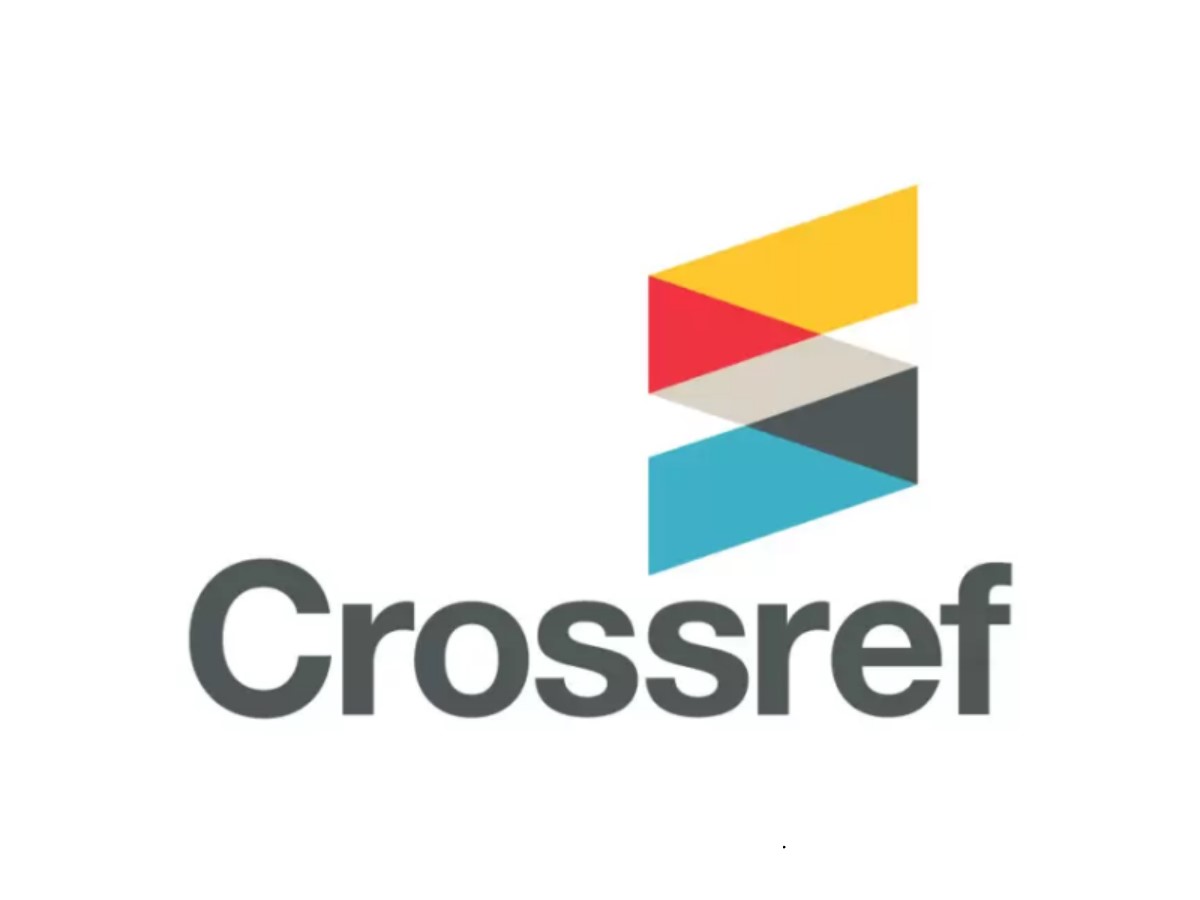BIOCOMPATIBLE P(TM co SA-CAA) HYDROGELS WITH pH RESPONSIVE AND ENHANCED MECHANICAL PERFORMANCE
DOI:
https://doi.org/10.53893/austenit.v15i2.7536Keywords:
Biocompatible, P(TM co SA-CAA) Hydrogels, Mechanical Performance, pH ResponsiveAbstract
In recent years, development of hydrogel that combines biocompatibility, pH responsive and mechanical performance has attracted the attention of researchers. A novel biocompatible hydrogel, composed of P(TM co SA) and P(TM co CAA) was synthesized by a simple admixture and heating process. The results show that with increasing levels of SA-CAA monomer concentration, an increase in tensile strength and elongation at breakpoint was observed and optimal at the ratios P(TM co SA CAA). Tensile strenght and young’s modulus registered an impressive increase of 43% and 40% respectively. These improvements are attributed to strong synergistic hydrogen bonding interactions between the TM and SA-CAA chains. During the experiment, maximum increase in weight was also achieved at pH 10 NaOH solution, it is show the pH-responsive hydrogels. The investigation of P(TM co SA-CAA) hydrogel mechanism showed that more homogenous dispersed through crosslinks dominated by β-sheets from Amide I structures. Furthermore, the SA-CAA molecules contributed to the biocompatibility, pH responsive and mechanical performance of P(TM co SA-CAA) hydrogels. Conclusively, its P(TM co SA-CAA) hydrogels clearly demonstrated the relevance of the provide a bioresponsive material for biomedical applications, such as tissue engineering, regenerative medicine and pH-sensitive drug delivery.
Downloads
References
Alberts, B., Johnson, A., Lewis, J., Raff, M., Roberts, K., & Walter, P. (2002). Cell movements and the shaping of the vertebrate body. In Molecular Biology of the Cell. 4th edition: Garland Science. https://www.ncbi.nlm.nih.gov/books/NBK21054/
Annabi, N., Tamayol, A., Uquillas, J. A., Akbari, M., Bertassoni, L. E., Cha, C., . . . Khademhosseini, A. J. A. m. (2014). 25th anniversary article: Rational design and applications of hydrogels in regenerative medicine. 26(1), 85-124. https://doi.org/10.1002/adma.201303233
Barcellona, M. N., Johnson, N., & Bernards, M. T. J. L. (2015). Characterizing drug release from nonfouling polyampholyte hydrogels. 31(49), 13402-13409. https://doi.org/10.1021/acs.langmuir.5b03597
Barth, A. J. B. e. B. A.-B. (2007). Infrared spectroscopy of proteins. 1767(9), 1073-1101. https://doi.org/10.1007/s11340-021-00741-6
Blackman, L. D., Gunatillake, P. A., Cass, P., & Locock, K. E. J. C. S. R. (2019). An introduction to zwitterionic polymer behavior and applications in solution and at surfaces. 48(3), 757-770. https://doi.org/10.1039/C8CS00508G
Cao, S., Barcellona, M. N., Pfeiffer, F., & Bernards, M. T. J. J. o. A. P. S. (2016). Tunable multifunctional tissue engineering scaffolds composed of threeâ€component polyampholyte polymers. 133(40). https://doi.org/10.1002/app.43985
Censi, R., Di Martino, P., Vermonden, T., & Hennink, W. E. J. J. o. C. R. (2012). Hydrogels for protein delivery in tissue engineering. 161(2),680-692. https://doi.org/10.1016/j.jconrel.2012.03.002
Colilla, M., Izquierdo-Barba, I., & Vallet-RegÃ, M. J. M. (2018). The role of zwitterionic materials in the fight against proteins and bacteria. 5(4), 125. https://doi.org/10.3390/medicines5040125
Costa, A. M., & Mano, J. F. J. E. P. J. (2015). Extremely strong and tough hydrogels as prospective candidates for tissue repair–A review.72,344-364. https://doi.org/10.1016/j.eurpolymj.2015.07.053
Discher, D. E., Janmey, P., & Wang, Y.-l. J. S. (2005). Tissue cells feel and respond to the stiffness of their substrate. 310(5751), 1139-1143. DOI: 10.1126/science.1116995
Dobbins, S. C., McGrath, D. E., & Bernards, M. T. J. T. J. o. P. C. B. (2012). Nonfouling hydrogels formed from charged monomer subunits. 116(49),14346-14352. https://doi.org/10.1021/jp307588b
Erathodiyil, N., Chan, H.-M., Wu, H., & Ying, J. Y. J. M. T. (2020). Zwitterionic polymers and hydrogels for antibiofouling applications in implan table devices. 38, 84-98. https://doi.org/10.1016/j.mattod.2020.03.024
Gao, X., Shi, Z., Liu, C., Yang, G., Sevostianov, I., & Silberschmidt, V. V. J. P. T. (2015). Inelastic behaviour of bacterial cellulose hydrogel: In aqua cyclic tests. 44, 82-92. https://doi.org/10.1016/j.polymertesting.2015.03.021
Guilak, F., Butler, D. L., Goldstein, S. A., & Baaijens, F. P. J. J. o. b. (2014). Biomechanics and mechanobiology in functional tissue engineering. 47(9), 1933-1940. https://doi.org/10.1016/j.jbiomech.2014.04.019
Haag, S. L., & Bernards, M. T. J. L. (2020). Enhanced biocompatibility of polyampholyte hydrogels. 36(13), 3292-3299. https://doi.org/10.1021/acs.langmuir.0c00114
Hershfield, M. S., Ganson, N. J., Kelly, S. J., Scarlett, E. L., Jaggers, D. A., Sundy, J. S. J. A. r., & therapy. (2014). Induced and pre-existing anti-polyethylene glycol antibody in a trial of every 3-week dosing of pegloticase for refractory gout, including in organ transplant recipients.16(2),1-11. https://doi.org/10.1186/ar4500
Jain, M., Matsumura, K. J. M. S., & C, E. (2016). Thixotropic injectable hydrogel using a polyampholyte and nanosilicate prepared directly after cryopreservation. 69, 1273-1281. https://doi.org/10.1016/j.jhazmat.2010.06.098
Jankaew, R., Rodkate, N., Lamlertthon, S., Rutnakornpituk, B., Wichai, U., Ross, G., & Rutnakornpituk, M. J. P. T. (2015). “Smart†carboxymethylchitosan hydrogels crosslinked with poly (N-isopropylacrylamide) and poly (acrylic acid) for controlled drug release. 42, 26-36. https://doi.org/10.1016/j.polymertesting.2014.12.010
Kong, J., & Yu, S. J. A. b. e. b. S. (2007). Fourier transform infrared spectroscopic analysis of protein secondary structures. 39(8), 549-559. https://doi.org/10.1111/j.1745-7270.2007.00320.x
Li, C.-P., Weng, M.-C., & Huang, S.-L. J. P. (2020). Preparation and characterization of pH sensitive Chitosan/3-Glycidyloxypropyl Trimethoxysilane (GPTMS) hydrogels by sol-gel method. 12(6), 1326. DOI: 10.3390/polym12061326
Li, H., Wu, R., Zhu, J., Guo, P., Ren, W., Xu, S., & Wang, J. J. J. o. P. S. P. B. P. P. (2015). pH/temperature double responsive behaviors and mechanical strength of laponiteâ€crosslinked poly (DEAâ€coâ€DMAEMA) nanocomposite hydrogels. 53(12), 876-884. https://doi.org/10.1002/polb.23713
Li, Y., & Kumacheva, E. J. S. a. (2018). Hydrogel microenvironments for cancer spheroid growth and drug screening. 4(4), eaas8998. https://doi.org/10.1002/polb.23713
Lin, C.-C., & Anseth, K. S. J. P. r. (2009). PEG hydrogels for the controlled release of biomolecules in regenerative medicine. 26, 631-643. DOI: 10.1126/sciadv.aas8998
Lubich, C., Allacher, P., de la Rosa, M., Bauer, A., Prenninger, T., Horling, F. M., . . . Reipert, B. M. J. P. r. (2016). The mystery of antibodies against polyethylene glycol (PEG)-what do we know? , 33, 2239-2249. https://doi.org/10.1007/s11095-016-1961-x
Luong, P., Browning, M., Bixler, R., & Cosgriffâ€Hernandez, E. J. J. o. B. M. R. P. A. (2014). Drying and storage effects on poly (ethylene glycol) hydrogel mechanical properties and bioactivity. 102(9), 3066-3076. doi: 10.1002/jbm.a.34977
Mariner, E., Haag, S. L., & Bernards, M. T. J. B. (2019). Impacts of cross-linker chain length on the physical properties of polyampholyte hydrogels. 14(3). https://doi.org/10.1116/1.5097412
Philippova, O., Barabanova, A., Molchanov, V., & Khokhlov, A. J. E. p. j. (2011). Magnetic polymer beads: Recent trends and developments in synthetic design and applications. 47(4), 542-559. https://doi.org/10.1016/j.eurpolymj.2010.11.006
Schroeder, M. E., Zurick, K. M., McGrath, D. E., & Bernards, M. T. J. B. (2013). Multifunctional polyampholyte hydrogels with fouling resistance and protein conjugation capacity. 14(9), 3112-3122. https://doi.org/10.1021/bm4007369
Seliktar, D. J. S. (2012). Designing cell-compatible hydrogels for biomedical applications. 336(6085), 1124-1128. DOI: 10.1126/science.1214804
Su, E., & Okay, O. J. E. P. J. (2017). Polyampholyte hydrogels formed via electrostatic and hydrophobic interactions. 88, 191-204. https://doi.org/10.1016/j.eurpolymj.2017.01.029
Sun, T. L., Kurokawa, T., Kuroda, S., Ihsan, A. B., Akasaki, T., Sato, K., Gong, J. P. J. N. m. (2013). Physical hydrogels composed of polyampholytes demonstrate high toughness and viscoelasticity. 12(10), 932-937. DOI: 10.1038/nmat3713
Tagami, T., Uehara, Y., Moriyoshi, N., Ishida, T., & Kiwada, H. J. J. o. C. R. (2011). Anti-PEG IgM production by siRNA encapsulated in a PEGylated lipid nanocarrier is dependent on the sequence of the siRNA. 151(2), 149-154. https://doi.org/10.1016/j.jconrel.2010.12.013
Tah, T., Bernards, M. T. J. C., & Biointerfaces, S. B. (2012). Nonfouling polyampholyte polymer brushes with protein conjugation capacity. 93, 195-201. https://doi.org/10.1016/j.colsurfb.2012.01.004
Takahashi, S. H., Lira, L. M., & de Torresi, S. I. C. (2012). Zero-order release profiles from a multistimuli responsive electro-conductive hydrogel. DOI:10.4236/jbnb.2012.322032
Tao, Y., Wang, S., Zhang, X., Wang, Z., Tao, Y., & Wang, X. J. B. (2018). Synthesis and properties of alternating polypeptoids and polyampholytes as protein-resistant polymers. 19(3), 936-942. https://doi.org/10.1021/acs.biomac.7b01719
Wong, V. W., Akaishi, S., Longaker, M. T., & Gurtner, G. C. J. J. o. I. D. (2011). Pushing back: wound mechanotransduction in repair and regeneration. 131(11), 2186-2196. https://doi.org/10.1038/jid.2011.212
Xiang, H., Xia, M., Cunningham, A., Chen, W., Sun, B., & Zhu, M. J. J. o. t. M. B. o. B. M. (2017). Mechanical properties of biocompatible clay/P (MEO2MA-co-OEGMA) nanocomposite hydrogels. 72, 74-81. https://doi.org/10.1016/j.jmbbm.2017.04.026
Yue, Y. F., Haque, M. A., Kurokawa, T., Nakajima, T., & Gong, J. P. J. A. m. (2013). Lamellar hydrogels with high toughness and ternary tunable photonic stopâ€band. 25(22), 3106-3110. https://doi.org/10.1002/adma.201300775.
Downloads
Published
How to Cite
Issue
Section
License
Copyright (c) 2023 Authors and Publisher

This work is licensed under a Creative Commons Attribution-ShareAlike 4.0 International License.
The Authors submitting a manuscript do so on the understanding that if accepted for publication, Authors retain copyright and grant the AUSTENIT right of first publication with the work simultaneously licensed under a Creative Commons Attribution-ShareAlike License that allows others to share the work with an acknowledgment of the work's authorship and initial publication in this journal.
AUSTENIT, the Editors and the Advisory International Editorial Board make every effort to ensure that no wrong or misleading data, opinions or statements be published in the journal. In any way, the contents of the articles and advertisements published in AUSTENIT are the sole responsibility of their respective authors and advertisers.














